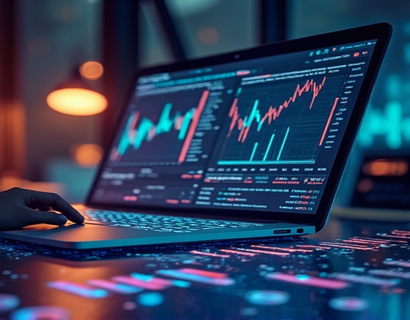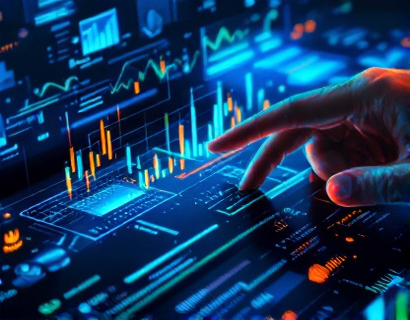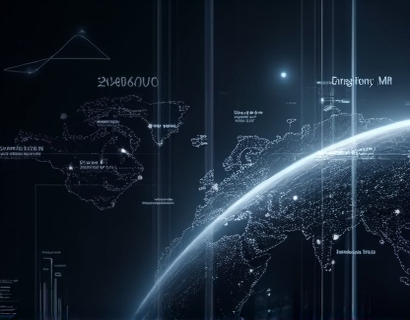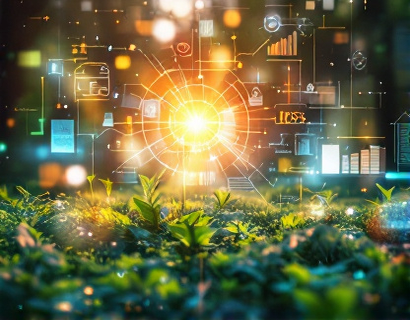Maximizing Aquaponics Business Success with Advanced Management Software
In the rapidly evolving world of sustainable agriculture, aquaponics stands out as a promising method that combines fish farming and hydroponic plant cultivation in a symbiotic environment. For aquaponics businesses, achieving success involves not only understanding the intricate balance between aquatic and terrestrial components but also implementing efficient management practices. Advanced management software plays a crucial role in streamlining operations, boosting productivity, and enhancing sustainability in aquaponics farming. This article delves into how such software can transform the way aquaponics businesses operate, ensuring optimal conditions for both fish and plants while minimizing environmental impact.
Understanding the Challenges in Aquaponics Management
Aquaponics systems are complex ecosystems where the health of fish and plants is interdependent. Maintaining optimal water quality, nutrient levels, and environmental conditions is essential for the success of the system. Traditional management methods often rely on manual monitoring and adjustments, which can be time-consuming and prone to human error. These challenges highlight the need for advanced management tools that can provide real-time data, automate routine tasks, and offer insights for better decision-making.
Key Features of Advanced Management Software
Advanced management software for aquaponics is designed to address these challenges by offering a suite of powerful tools. These tools include real-time monitoring, automated control systems, data analytics, and reporting features. Here’s a closer look at how these features contribute to maximizing business success:
Real-Time Monitoring
Real-time monitoring is a cornerstone of effective aquaponics management. Advanced software allows farmers to continuously track key parameters such as water temperature, pH levels, dissolved oxygen, and nutrient concentrations. This constant surveillance ensures that any deviations from optimal conditions are detected and addressed promptly. For instance, if the pH level drops below the desired range, the system can automatically trigger adjustments to restore balance, preventing potential harm to the fish and plants.
Automated Control Systems
Automation is another critical aspect of advanced management software. By integrating with hardware components like pumps, filters, and aerators, the software can automate routine tasks such as feeding schedules, water circulation, and aeration. This not only reduces the workload on farm operators but also ensures consistent and precise control over the environment. Automated systems can be programmed to respond to specific conditions, further enhancing the stability and efficiency of the aquaponics system.
Data Analytics and Insights
Data analytics is a powerful tool that transforms raw monitoring data into actionable insights. Advanced software collects and analyzes data over time, providing trends and patterns that can inform management decisions. For example, by analyzing historical data, farmers can identify the most effective feeding regimes, optimal stocking densities, and the best times for system maintenance. These insights can lead to improved productivity and reduced resource consumption, contributing to the overall sustainability of the operation.
Reporting and Compliance
Reporting is an essential function of advanced management software, especially for businesses that need to meet regulatory requirements or seek certifications. The software can generate detailed reports on water quality, system performance, and resource usage. These reports not only help in demonstrating compliance with environmental standards but also provide valuable information for continuous improvement. For instance, a detailed nutrient usage report can guide adjustments to feeding practices, reducing waste and promoting a more sustainable operation.
Enhancing Productivity and Efficiency
By leveraging the features of advanced management software, aquaponics businesses can significantly enhance their productivity and efficiency. Here are some specific ways in which this is achieved:
Optimized Resource Usage
One of the primary benefits of advanced management software is its ability to optimize resource usage. Precise control over water parameters and automated feeding systems ensure that resources are used efficiently, reducing waste and lowering operational costs. For example, automated dosing systems can precisely deliver the right amount of nutrients based on real-time data, preventing over-fertilization and minimizing nutrient loss.
Increased Crop Yields
Optimal environmental conditions supported by advanced monitoring and control systems lead to healthier plants and faster growth rates. By maintaining ideal conditions, such as temperature, pH, and nutrient levels, plants can thrive, resulting in higher yields. Additionally, the ability to monitor plant health in real-time allows for early detection and treatment of issues, further enhancing crop productivity.
Improved Fish Health and Growth
Fish health is directly linked to water quality, which is meticulously managed through advanced software. By maintaining optimal conditions, the software helps prevent diseases and stress in fish, leading to better growth rates and higher biomass. Automated systems for feeding and water circulation ensure that fish receive the necessary care, contributing to a healthier and more productive aquaculture component of the business.
Promoting Sustainability
Sustainability is a core value in the aquaponics industry, and advanced management software plays a pivotal role in achieving this goal. Here’s how:
Reduced Environmental Impact
Advanced management software helps minimize the environmental footprint of aquaponics operations. By optimizing resource usage and reducing waste, the system contributes to more sustainable practices. For instance, precise nutrient management prevents excess nutrients from entering the environment, reducing the risk of water pollution. Additionally, energy-efficient automation reduces the overall energy consumption of the facility.
Enhanced Water Usage Efficiency
Water is a precious resource in aquaponics, and advanced software helps maximize its efficiency. Recirculating systems, controlled by the software, ensure that water is continuously cleaned and reused, significantly reducing water consumption compared to traditional farming methods. This not only conserves water but also lowers the operational costs associated with water supply and treatment.
Support for Renewable Energy Integration
Advanced management software can also facilitate the integration of renewable energy sources, such as solar or wind power, into aquaponics operations. By monitoring energy usage and generating data on energy consumption patterns, the software helps farmers make informed decisions about energy sources and usage. This integration further reduces the carbon footprint of the business, aligning with sustainability goals.
Case Studies and Success Stories
To illustrate the real-world impact of advanced management software in aquaponics, consider a few success stories:
A medium-sized aquaponics farm in the Midwest implemented an advanced management system to monitor and control their system. Within six months, they observed a 20% increase in crop yields and a 15% reduction in energy consumption. The real-time data and automated controls allowed the farm to respond quickly to any issues, maintaining optimal conditions consistently. The farm also reported a significant reduction in nutrient waste, contributing to a more sustainable operation.
Another example is a small-scale urban aquaponics project in a densely populated city. By using advanced software to manage their compact system, the operators were able to achieve high productivity despite limited space. The software’s data analytics features helped them optimize feeding and water parameters, leading to healthy fish and robust plant growth. The project not only provided fresh produce to the local community but also served as an educational tool for sustainable farming practices.
Future Trends and Innovations
The integration of advanced management software in aquaponics is just the beginning. Future trends and innovations promise to further enhance the capabilities of these systems:
Artificial Intelligence and Machine Learning
AI and machine learning are set to revolutionize aquaponics management by providing even more sophisticated data analysis and predictive capabilities. These technologies can analyze vast amounts of data to identify patterns and make predictions, enabling proactive management decisions. For example, AI can predict potential system failures before they occur, allowing for preventive maintenance and minimizing downtime.
Internet of Things (IoT) Integration
The Internet of Things (IoT) will play a significant role in the future of aquaponics management. IoT devices can be integrated into the management software to create a fully connected and intelligent system. Sensors placed throughout the facility can transmit data in real-time, providing a comprehensive view of the system’s status. This level of connectivity ensures that all components work seamlessly together, further enhancing efficiency and reliability.
User-Friendly Interfaces
As technology advances, the user interfaces of management software are becoming more intuitive and user-friendly. This trend is crucial for widespread adoption, as it makes advanced tools accessible to farmers of all skill levels. Intuitive interfaces reduce the learning curve, allowing operators to focus on managing their operations rather than navigating complex software.
Conclusion
Advanced management software is a game-changer for aquaponics businesses, offering a range of benefits that contribute to success in a competitive market. By streamlining operations, boosting productivity, and enhancing sustainability, these tools empower farmers to achieve their goals more effectively. As the industry continues to grow, the adoption of advanced management software will become increasingly important for staying ahead of the curve. Embracing these technologies not only improves business performance but also supports the broader mission of sustainable agriculture.










































